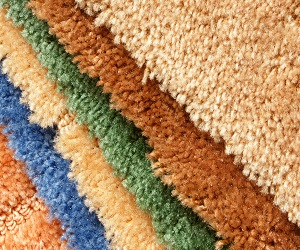Low Moisture Carpet Care
9 April 2013
 While the term is quite familiar and understood by many in the carpet cleaning industry, building owners and managers may be less familiar with what “low moisture” carpet cleaning is all about. It refers to any method, procedure, or form of carpet cleaning that allows carpet fibers to dry and return to their natural state in two hours or less at approximately 65% humidity and at 70 degrees (F).
While the term is quite familiar and understood by many in the carpet cleaning industry, building owners and managers may be less familiar with what “low moisture” carpet cleaning is all about. It refers to any method, procedure, or form of carpet cleaning that allows carpet fibers to dry and return to their natural state in two hours or less at approximately 65% humidity and at 70 degrees (F).The goal is to reduce the amount of moisture applied or remains in the carpet during and after the carpet cleaning process so that it dries quickly and evenly. This helps protect the carpet, its backing, and the subfloor below the carpet. It also helps eliminate possible saturation of the carpet, which can result in mold, mildew, bacteria, or other contaminants developing.
According to Mark Warner of the Low Moisture Carpet Cleaning Association, the use of low moisture carpet cleaning equipment and techniques can also increase the carpet’s performance and appearance. “It can also extend the useful life of the carpet, enhance the ability to service the carpet, and minimize downtime waiting for ‘just cleaned’ carpeted areas to dry, which is a major consideration in a commercial office building or similar facility,” he says.
However, in some situations, drying carpets in two hours or less can be difficult. Every facility has its own environmental and climatic conditions that can impact drying times. And, some carpets are more heavily soiled than others or contain specific types of soils (e.g., grease, oil, certain types of food spills, etc.), which may require the use of additional water and cleaning solution, and other measures to effectively remove these contaminants. Because of this, different carpet cleaning methods may have to be employed to meet the goals of low moisture cleaning.
Some of these methods include the following:
Bonnet cleaning: With this system, a cleaning product is applied to the carpet and then extracted with an absorbent bonnet attached to a low-rpm (rotations per minute) floor machine. The floor machine provide agitation to help loosen and remove soils and it can accumulate a significant amount of soil in the process. For this reason, the bonnet may need to be turned over or replaced frequently during the cleaning process. Once the carpets are dry, vacuuming is often recommended to remove any remaining cleaning chemicals or soil in the carpet.
Shampoo cleaning: In many ways, this is similar to bonnet cleaning. A low rpm floor machine distributes a specially-formulated liquid detergent onto the carpet. This method also agitates the carpet to help loosen and remove soils. Once this step is complete, what is referred to as suspended soil is extracted, along with the shampoo and moisture, using a wet vacuuming system. Then, once the carpet has sufficiently dried, vacuuming is performed to remove any remaining soils or shampoo/detergent residue.
Encapsulation: With this method, encapsulation chemicals are applied to carpet using a low-rpm floor machine or a cylindrical machine that has brushes, instead of pads, to work chemicals into the carpet. Once in the carpet, these chemicals crystallize. This takes about 30 minutes to an hour. Then, the carpets are vacuumed, removing the crystals and soils. This method typically requires no water at all.
There are several additional low moisture processes that could be mentioned, including: other dry methods that also require no water; dry foam; and a mist-and-brush method that uses a non-foaming detergent and a floor machine or similar equipment. While all of these techniques can be used to meet the goals of low moisture carpet cleaning, they also may pose potential problems.
For instance, with bonnet and shampoo cleaning, some chemical residue may be left in the carpet after cleaning. In many cases, this can lead to what is called “rapid re-soiling,” where the residue actually attracts more soils. Additionally, one somewhat controversial element of a carpet shampoo detergent is that it may include an optical brightener. While the brightener can improve the carpet’s appearance after cleaning, over time it can negatively impact its color of the carpet. Moreover, depending on what types of encapsulation chemicals are used, re-soiling can be an issue with this method as well.
Visit Our Website https://www.remlandcarpets.co.uk/
More news from Remland Carpets